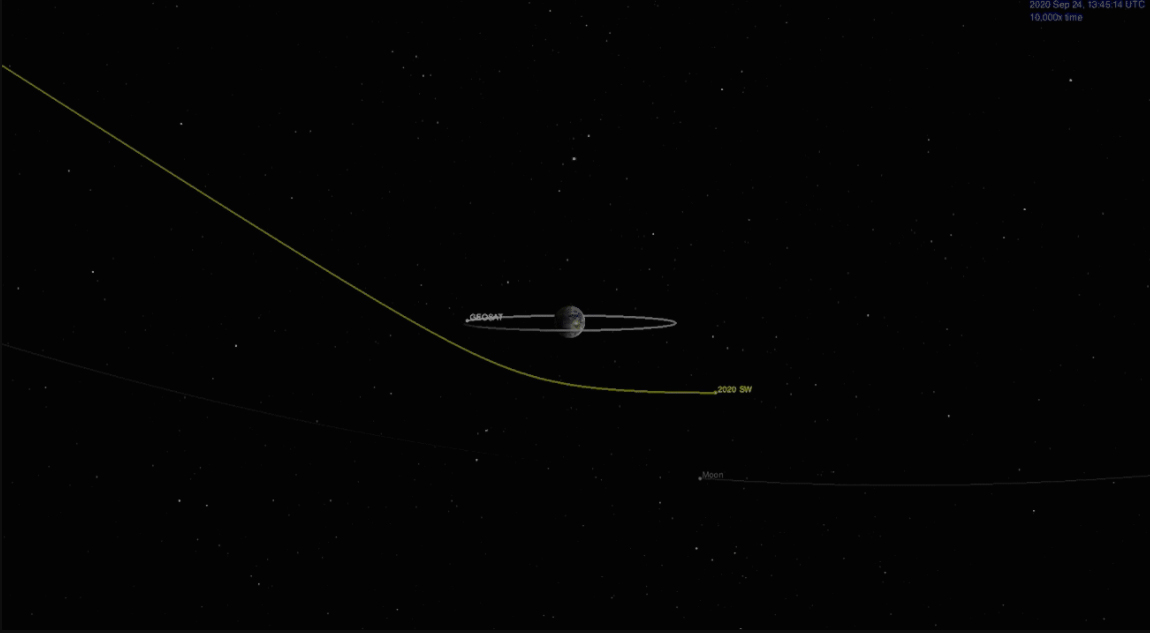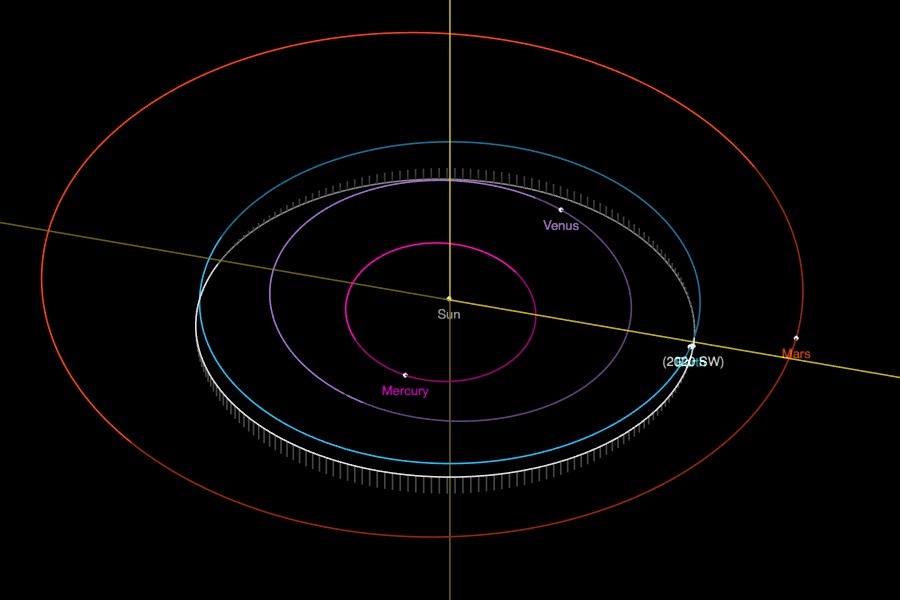RV-size asteroid to get closer to Earth than the moon
This asteroid isn't socially distancing with Earth very well.
An asteroid will get awfully close to Earth this Thursday (Sept. 24), when it whizzes by our planet closer than the moon orbits.
The asteroid — known as 2020 SW — isn't expected to collide with Earth, according to the Center for Near Earth Object Studies (CNEOS) at the Jet Propulsion Laboratory in Pasadena, California. But it will get close, passing about 13,000 miles (22,000 kilometers) away from Earth, according to NASA.
To put this in perspective, the moon hangs out at an average of 238,900 miles (384,000 km) from us, or about 30 Earths away. This asteroid will pass at a distance of about 2.1 Earths. This means that asteroid 2020 SW will pass even closer than TV and weather satellites, which orbit at about 22,300 miles (35,888 km) away from Earth, according to EarthSky.
Related: Top 10 ways to destroy Earth

Scientists have yet to pin down the asteroid's exact size, but it's not that large, likely between 14 feet and 32 feet (4.4 and 9.9 meters) long, according to CNEOS. This potentially RV-size asteroid was discovered only last week, on Sept. 18, by the Mount Lemmon Survey in Arizona, and announced the next day by the Minor Planet Center, a NASA-funded group that monitors minor planets, comets and natural satellites. (It's not unusual to find unknown asteroids; in September alone, the Minor Planet Center has announced the discovery of 244 near-Earth objects.)

Passing by Earth will actually be a life-changing event for asteroid 2020 SW. It's such a small asteroid that Earth's gravity is expected to change the space rock's course when it zooms by our planet at 7:18 a.m. EDT (11:18 UTC), according to EarthSky.
After asteroid 2020 SW's close shave with Earth, it won't pay our planet another visit until June 3, 2029, according to the Jet Propulsion Laboratory.
Get the Space.com Newsletter
Breaking space news, the latest updates on rocket launches, skywatching events and more!
That said, the asteroid is certainly rushing to see us this Thursday (we hope it has a face mask), traveling at a velocity of about 17,200 mph (27,720 km/h, or 7.7 km/second) relative to Earth, the Jet Propulsion Laboratory reported.
The asteroid will appear brighter as it nears Earth, but it won't be visible to the naked eye. If you want a clear view of the space rock, visit The Virtual Telescope website, which is showing a live feed starting at 6 p.m. EDT (22:00 UTC) on Wednesday, Sept. 23.
Originally published on Live Science.
Join our Space Forums to keep talking space on the latest missions, night sky and more! And if you have a news tip, correction or comment, let us know at: community@space.com.

Laura is an editor at Live Science. She edits Life's Little Mysteries and reports on general science, including archaeology and animals. Her work has appeared in The New York Times, Scholastic, Popular Science and Spectrum, a site on autism research. She has won multiple awards from the Society of Professional Journalists and the Washington Newspaper Publishers Association for her reporting at a weekly newspaper near Seattle. Laura holds a bachelor's degree in English literature and psychology from Washington University in St. Louis and an advanced certificate in science writing from NYU.
-
Geomartian Reply
Artist’s depiction of the asteroid found in a bar near the Jet Propulsion Laboratory in Pasadena, California.










